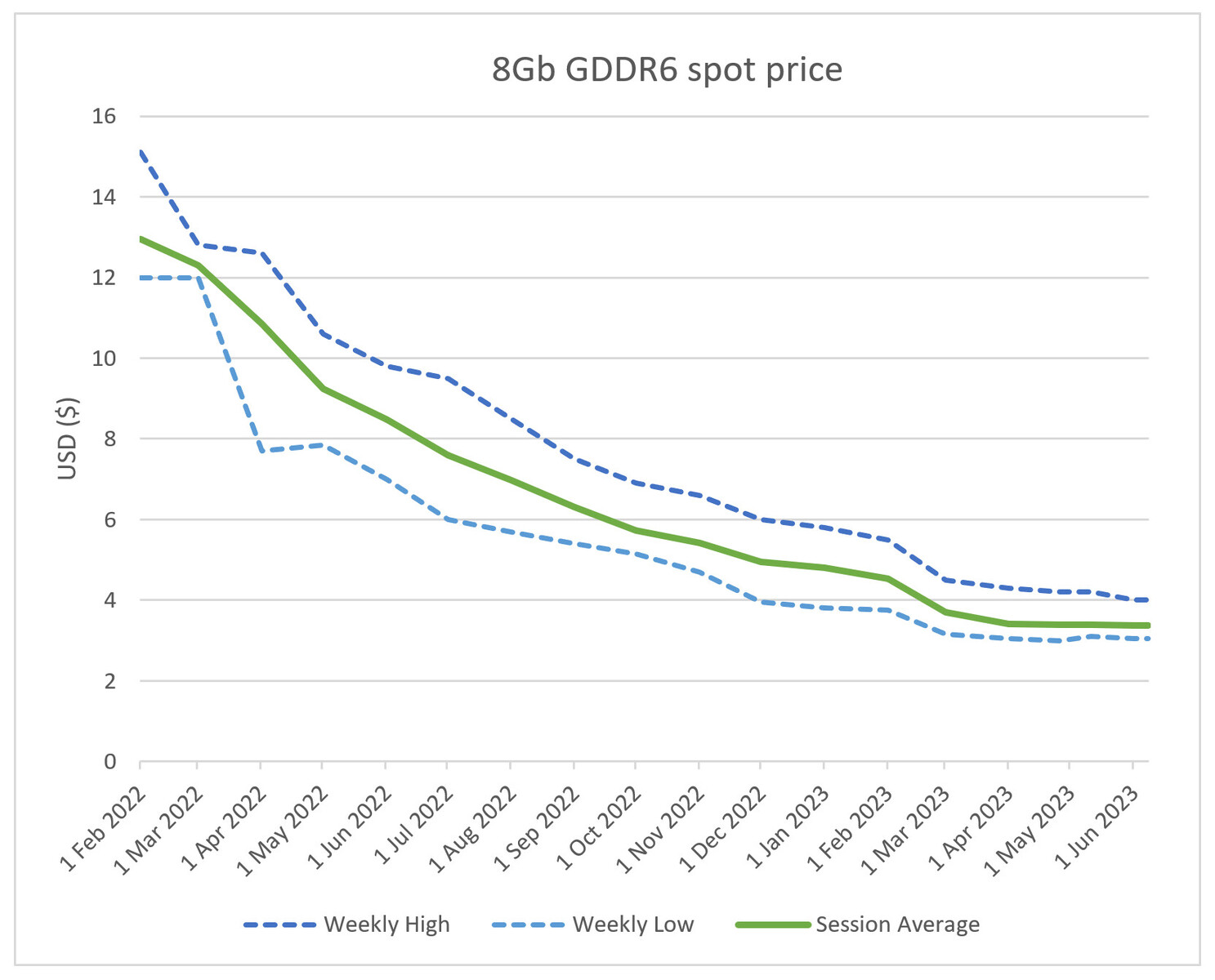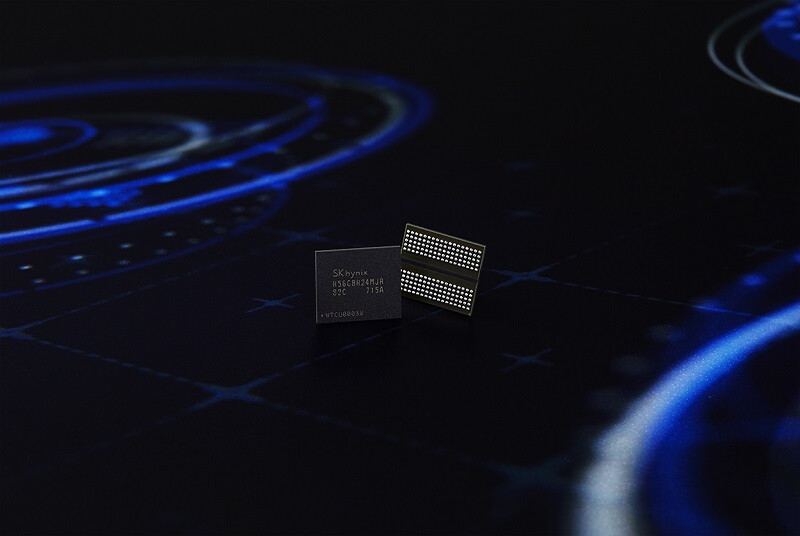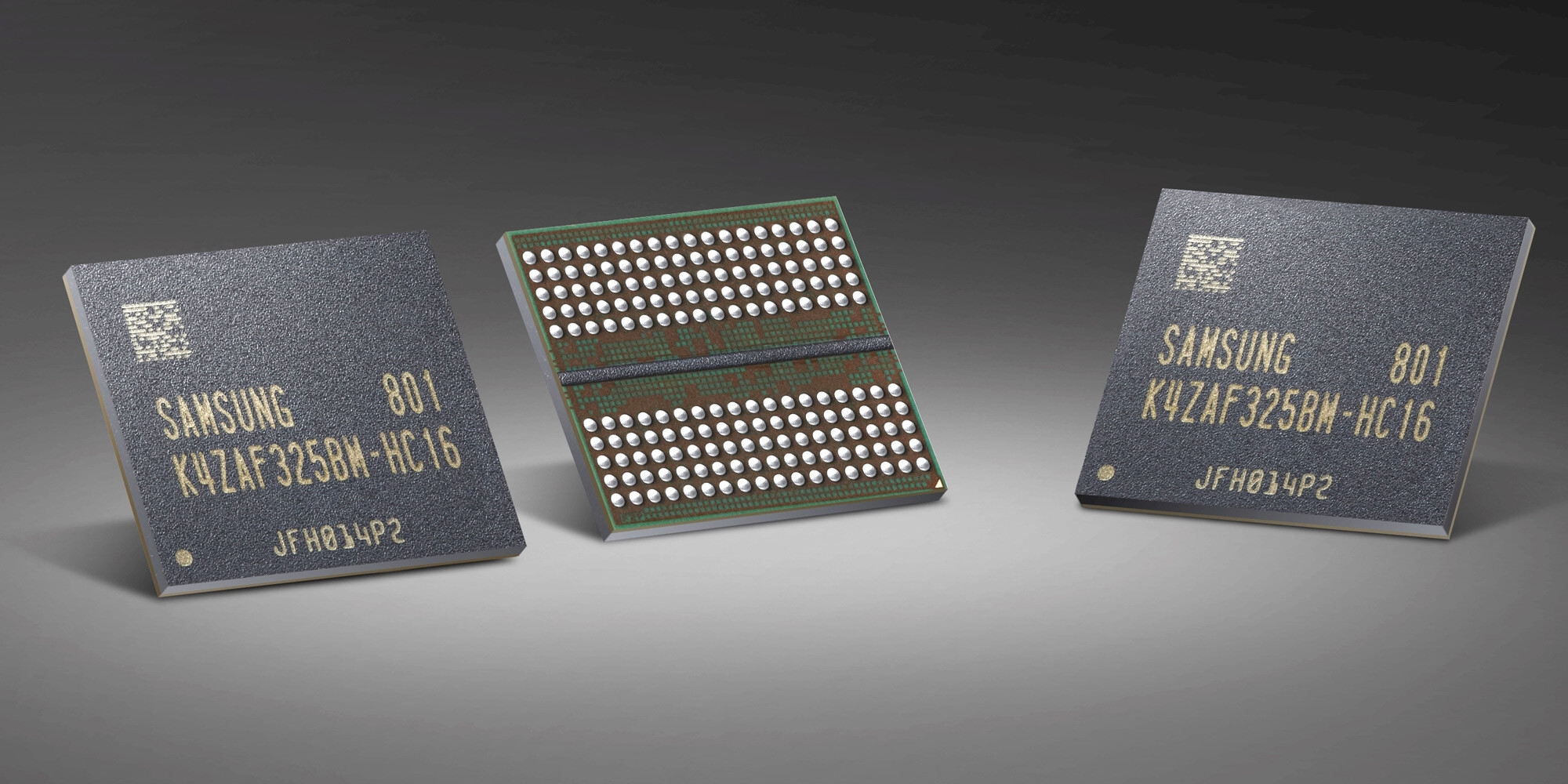The cost of GDDR6 memory has been decreasing rapidly over the past few financial quarters due to a decrease in demand for graphics cards. Additionally, supply shortages are no longer an issue, as manufacturers have had an easier time acquiring components since late 2021. This means that companies like NVIDIA and AMD have been paying less for VRAM packages. However, customers have not seen these savings passed on to them yet. Recent data shows that spot prices of GDDR6 have decreased to less than a quarter of their value from a year and a half ago. For example, 8 GB GDDR6 now costs $27 via the spot market, although manufacturers pay less due to direct contract agreements with their memory chip supplier.
It is difficult to compare the cost of equipping a "budget-friendly" graphics card with a larger allocation of video memory, as the price of 16 Gb GDDR6 VRAM ICs on the spot market is unknown. NVIDIA is releasing a GeForce RTX 4060 Ti 16 GB variant in July, but the latest batch of low to mid-range models (GeForce RTX 4060-series and Radeon RX 7600) are still 8 GB affairs. GPU makers are expected to stick with the traditional specification hierarchy for the most part going forward, with double the VRAM usually reserved for the more lucrative professional GPU market.
Last September, Trendforce predicted that there would be another round of price cuts for graphics cards due to weakened demand for GDDR6 8 Gb and 16 Gb. However, preexisting inventory and limited demand for terminal promotions have prevented these price cuts from driving new demand. As a result, preexisting graphics DRAM inventory continues to pile up, creating greater pressure coupled with the gradual production of previous wafer starts. From the perspective of 4Q22, the price decline of GDDR6 8 Gb chips may be higher than GDDR6 16 Gb, lowering prices by approximately 10-15%.


